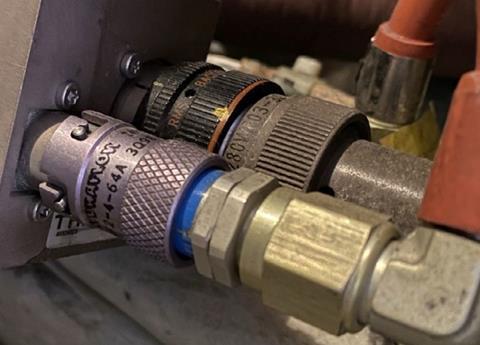Investigators have determined that a Transavia Boeing 737-700 brought out of storage during the pandemic departed Rotterdam without its pitot-static pressure lines being connected to their air-data modules, with a loss of crucial flight information to the pilots.
The aircraft was operating to Alicante on 24 April 2021, and had undergone a routine pre-flight inspection including examination of the pitot-static system, says the Dutch Safety Board.
But after the jet took off from runway 06, the monitoring pilot saw no positive climb or altitude indication on the primary flight displays.
The safety board states that, fortunately, daylight weather conditions and visibility were good and the crew was able to maintain a nose-up attitude. But unreliable airspeed indications, down to 45kt, resulted in windshear and low-speed alarms, and activation of the stick-shaker.
About 1min after take-off the crew declared an emergency and, using standby instruments, diverted to Amsterdam Schiphol. Military radar showed the aircraft reached about 11,000ft. Although the crew again received windshear warnings on approach, the 737 touched down 38min after leaving Rotterdam.

Maintenance personnel inspecting the pitot-static lines discovered three quick-disconnect fittings were not attached to their air-data modules – preventing the system from providing pressure-derived information to the cockpit.
The safety board found the aircraft (PH-XRX) had been put into long-term storage at Rotterdam on 19 February, two months before the incident. Its pitot-static system was protected from contamination.
As part of measures to return the aircraft to service, the pitot-static lines had to be disconnected, flushed and reconnected.
But the safety board says the technicians performing the task “lost track” of who was responsible for the reconnection of the fittings. It states that the fittings are “very unlikely” to disconnect on their own, and that they were probably not connected correctly, or at all, after the flushing procedure.

Although Boeing had issued a message to operators concerning pitot-static flushing and reconnection on 25 March 2021 – following a similar incident with a different airline – this had not, at the time, reached the technicians working on the Transavia jet.
Five weeks after the Transavia incident the safety board published its own cautionary message to airlines and maintenance personnel, instructing them to pay particular attention to the risks of recommissioning aircraft brought out of storage during the pandemic.


























